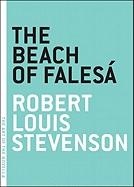The Beach at Falesa

Editorial Melville House Publishing
Fecha de edición abril 2005 · Edición nº 1
Idioma inglés
EAN 9780976140719
116 páginas
Libro
encuadernado en tapa blanda
Resumen del libro
"White men die very suddenly in Falesa."
Originally censored by its British publisher, "The Beach at Falesa" is a scathing critique of colonialism and economic imperialism that bravely takes on many of the 19th Century' s strongest taboos: miscegenation, imperialism, and economic exploitation. It does so with a story that features a surprising and beguiling romance between an adventurous British trader and a young island girl, against a background of increasing--and mysterious--hostility. Are the native islanders plotting against the couple, or is it the other white traders? The result is a denouement that is astonishing in its violence. Told in the unadorned voice of the trader, it is a story that deftly combines the form of the exotic adventure yarn with the moral and psychological questing of great fiction.
The Art of The Novella Series
Too short to be a novel, too long to be a short story, the novella is generally unrecognized by academics and publishers. Nonetheless, it is a form beloved and practiced by literature's greatest writers. In the Art Of The Novella series, Melville House celebrates this renegade art form and its practitioners with titles that are, in many instances, presented in book form for the first time.
Contributor Bio: Stevenson, Robert Louis
Robert Louis (Balfour) Stevenson was a prolific Scottish poet and novelist in the 19th century. He was admired by many other authors, and his work includes The Black Arrow, Kidnapped, and The Strange Case of Dr. Jekyll and Mr. Hyde. He died in 1894.
Biografía del autor
(Edimburgo, Escocia, 1850 - Samoa, 1894) es uno de los escritores que más ha influido en la literatura del siglo XX. Aunque estudió leyes y ejerció como abogado, acabó dedicándose exclusivamente a la literatura, gracias al éxito de obras como "La isla del tesoro" (1883) y "El extraño caso del Dr. Jekyll y el Sr. Hyde" (1886). En 1880 se casó con Fanny Osbourne, una norteamericana diez años mayor que él, y se trasladó a vivir a Estados Unidos, en donde Stevenson conoció y se hizo amigo de Mark Twain. Enfermo de tuberculosis, en 1888 emprendió junto a su mujer un viaje por el Pacífico Sur y acabó instalándose a vivir en Samoa, donde los aborígenes le bautizaron como Tusitala ( el contador de historias ).








